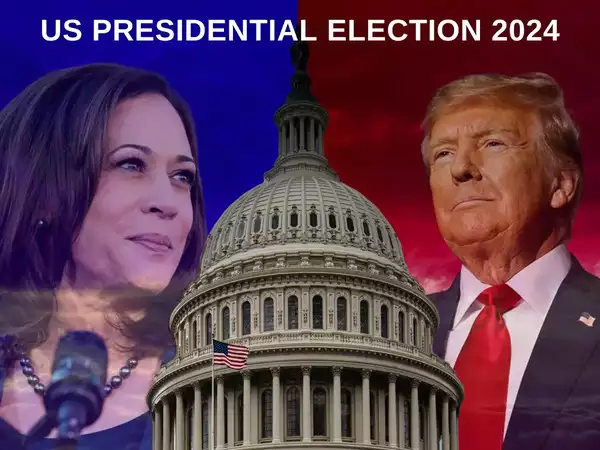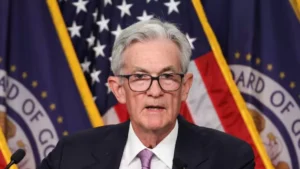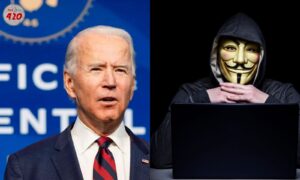
The 2024 presidential race is coming to a climax as Election Day is just around the corner, and both major candidates are pouring their efforts into battleground states. With the polls tight and voter turnout in states like Pennsylvania, Georgia, and Arizona expected to play a decisive role, each campaign is rallying last-minute support in hopes of securing victory in one of the closest presidential races in recent memory.
Focus on Swing States in the 2024 Presidential Race
Swing states have traditionally been pivotal in determining the outcome of presidential elections, and the 2024 presidential race is no exception. Both campaigns recognize that a small number of key states will likely decide the result. Pennsylvania, Georgia, and Arizona, in particular, have emerged as high-stakes battlegrounds, with recent polling showing a razor-thin margin between the two candidates in these areas.
In Pennsylvania, the candidates are focusing on mobilizing suburban voters and reaching undecided voters in critical districts. Georgia, historically a conservative state that leaned Democratic in 2020, remains unpredictable, with both sides concentrating on Atlanta and its surrounding metro areas. Arizona, meanwhile, has become a toss-up with both parties eyeing Maricopa County, which holds a substantial share of the state’s voting population. Campaign teams are conducting extensive ground efforts in these regions to ensure that no potential voter is overlooked.
Rallies and Advertising in the Final Days
In the closing days of the 2024 presidential race, each campaign has ramped up its advertising efforts and in-person rallies, aiming to reach as many voters as possible. The candidates have made multiple visits to battleground states over the past week, speaking directly to voters about their key platform issues, including the economy, healthcare, and national security.
Television and digital ads have flooded the airwaves, with messaging tailored to each state’s unique demographics and key issues. Pennsylvania’s focus is on job growth and economic stability, reflecting the needs of a diverse working-class population. Georgia ads emphasize healthcare access and voting rights, resonating with a broader demographic. Meanwhile, in Arizona, immigration policy and water management are focal points, as the state grapples with both economic and environmental challenges.
High Voter Turnout Anticipated
With the 2024 presidential race at a critical juncture, experts anticipate that voter turnout will be substantial, potentially exceeding levels seen in previous elections. Early voting reports indicate high participation rates, particularly in swing states. This trend suggests that both campaigns’ efforts to energize their bases are paying off, as voters have already turned out in large numbers for early voting in Pennsylvania, Georgia, and Arizona.
Organizations and grassroots campaigns are working to ensure that voter turnout continues at high levels. Local groups in battleground states are offering resources for voters, including transportation to polling places, to maximize turnout on Election Day. Additionally, both campaigns have invested heavily in digital outreach, using text and social media to remind people of voting deadlines and polling locations.
Policy Focus: Key Issues Driving Voter Decisions
The 2024 presidential race has brought several major issues to the forefront, influencing voter sentiment across the country. Economic recovery, inflation, healthcare reform, and climate change are central themes that each candidate has addressed extensively.
- Economic Policy and Inflation: With inflation continuing to impact households, both candidates have prioritized economic policy. One candidate advocates for tax cuts to ease the financial burden on the middle class, while the other promises robust government spending on social programs to support low-income families. The approach to economic stability may prove to be a deciding factor for many voters.
- Healthcare Reform: Access to affordable healthcare remains a major concern for Americans, particularly as healthcare costs continue to rise. The candidates have opposing views on how to address this issue, with one proposing to expand government-funded healthcare, while the other advocates for deregulating the healthcare industry to increase competition.
- Climate Change and Environmental Policy: As climate change intensifies, especially in states vulnerable to extreme weather like Arizona, both campaigns have proposed policies to address environmental concerns. One candidate promises substantial investment in renewable energy and green jobs, while the other emphasizes economic growth over environmental regulation, arguing that the private sector should lead innovation in green technology.
Legal Challenges and Election Integrity Concerns
The 2024 presidential race has not been without controversy, as both campaigns have raised concerns about election integrity and potential legal challenges. Several lawsuits have already been filed in key swing states, focusing on issues such as ballot counting procedures and mail-in voting. The close nature of the race in these states has heightened concerns about the possibility of recounts or court interventions, echoing past contentious elections.
The presence of election monitors and legal teams in battleground states is meant to ensure transparency and adherence to election laws. Both campaigns have assembled teams of lawyers ready to contest results if necessary, particularly in states where margins could be narrow. Additionally, advocacy groups are pushing for clear communication on voter rights and voting procedures to minimize confusion and prevent disqualification of legitimate votes.
Impact of Third-Party Candidates
While the 2024 presidential race is primarily a two-party contest, third-party candidates are also in the spotlight, especially in close states where they could potentially pull votes from the major candidates. The role of third-party candidates has been a topic of debate, as some analysts believe they could influence the election outcome by drawing votes away from one of the major candidates, especially in tight races like those in Pennsylvania and Arizona.
Though third-party candidates are unlikely to win a significant number of votes nationwide, their impact on critical swing states could be meaningful, especially if their supporters might otherwise lean toward one of the major parties. Both campaigns are working to counteract this effect by addressing issues important to third-party voters, hoping to win over undecided voters who may be contemplating a third-party vote.
Looking Ahead to Election Night
With the 2024 presidential race so close, election night could prove suspenseful, especially in states where the vote count may extend into the next day or beyond. As polls close and preliminary results begin to trickle in, analysts will closely watch the performance in swing states, where just a few thousand votes could tip the scales. Both campaigns have prepared for a long night, and in some cases, a prolonged count may occur as mail-in ballots are tabulated and potential recounts are initiated.
The final push in the 2024 presidential race underscores the importance of every vote, with each campaign doing everything possible to rally support in these last crucial hours. Voters in Pennsylvania, Georgia, Arizona, and other battleground states hold the power to decide the direction of the nation for the next four years. Regardless of the outcome, this election highlights the continuing significance of the democratic process and the value of each individual’s vote.
The 2024 presidential race has captured the attention of voters nationwide, with swing states poised to make the difference in a historic election. This final push by both campaigns exemplifies the dedication and intensity that characterize modern political contests, and as voters prepare to cast their ballots, the nation waits in anticipation for the outcome that will shape the future.
image credit – economictimes.indiatimes.com


